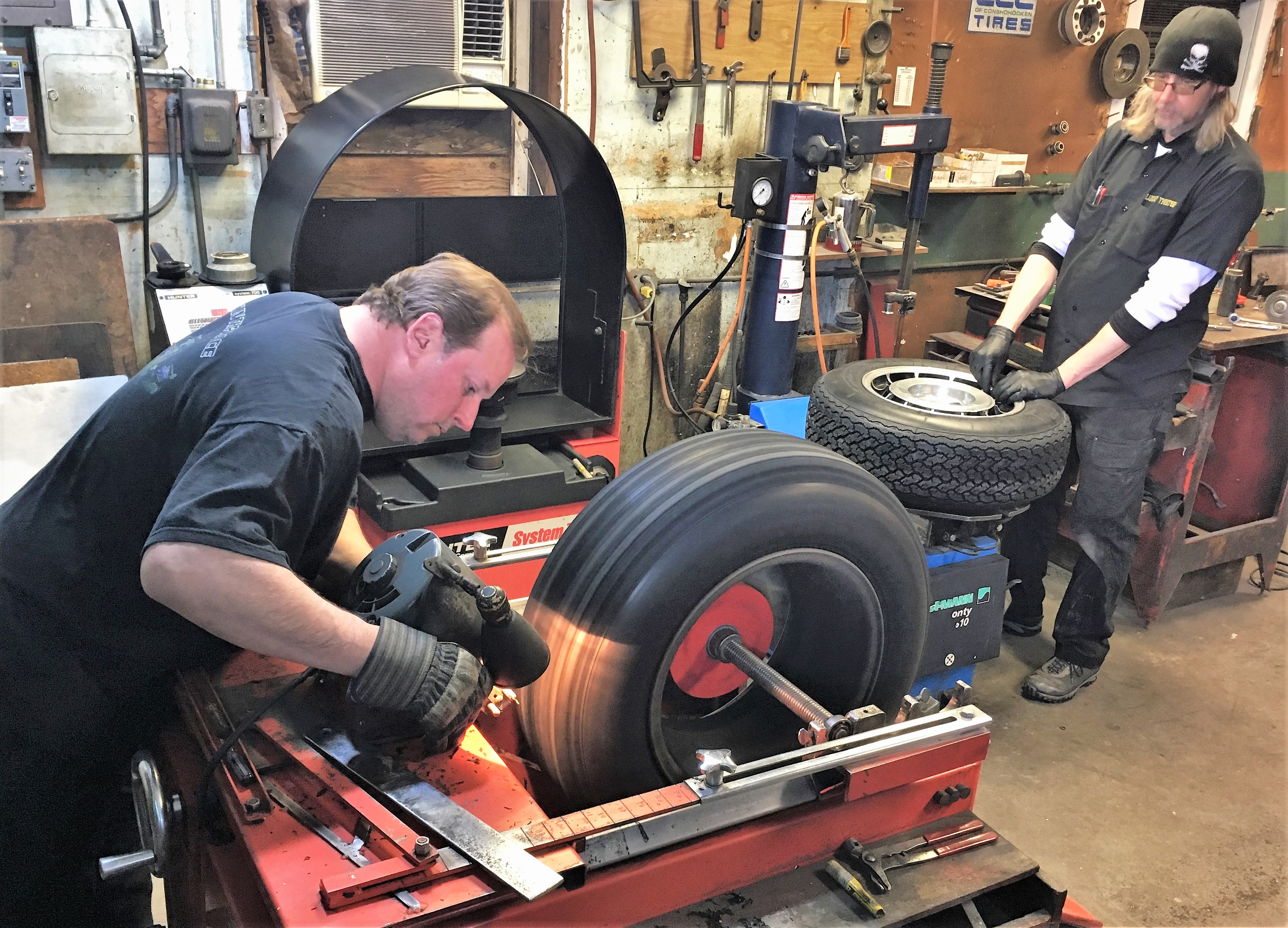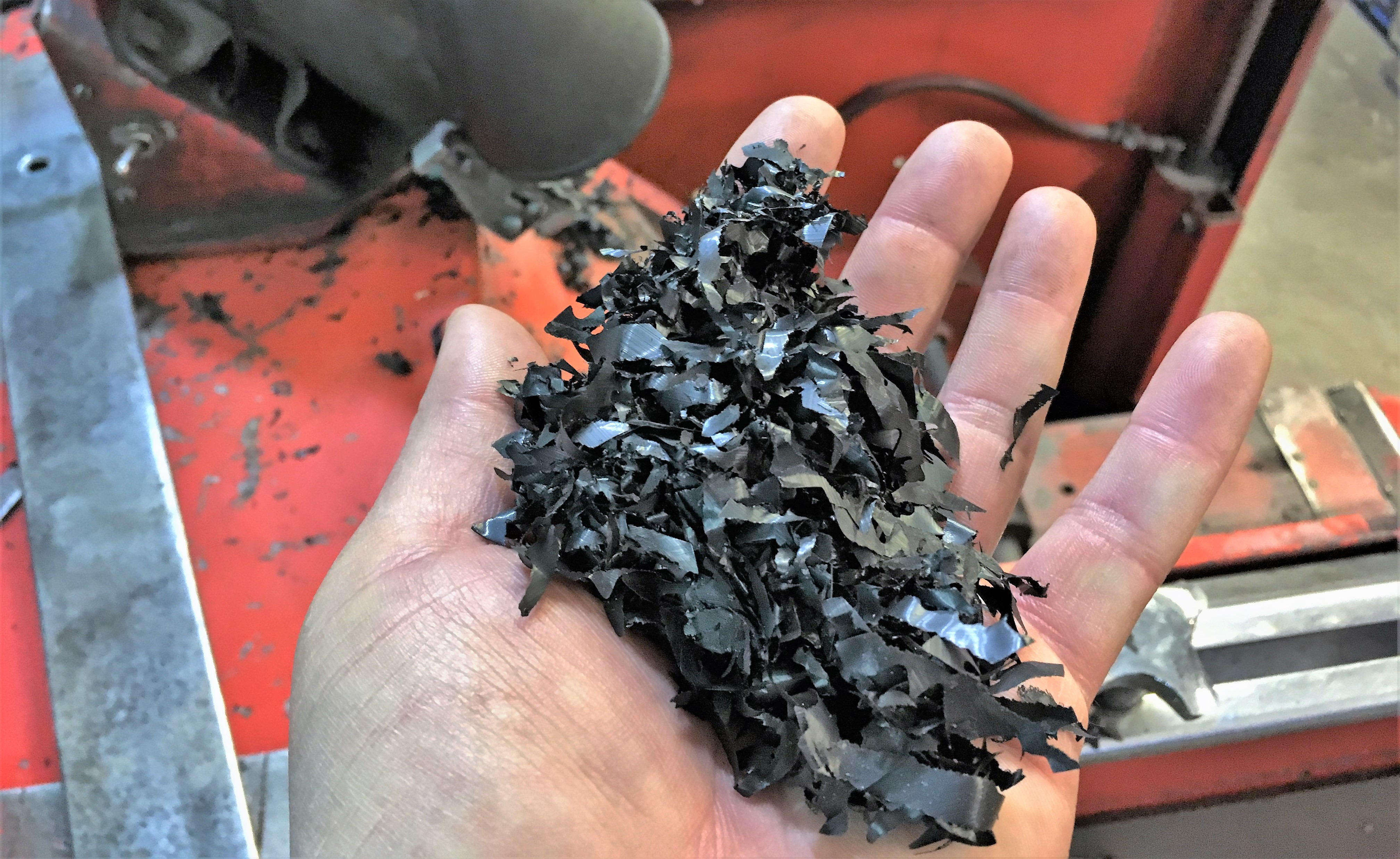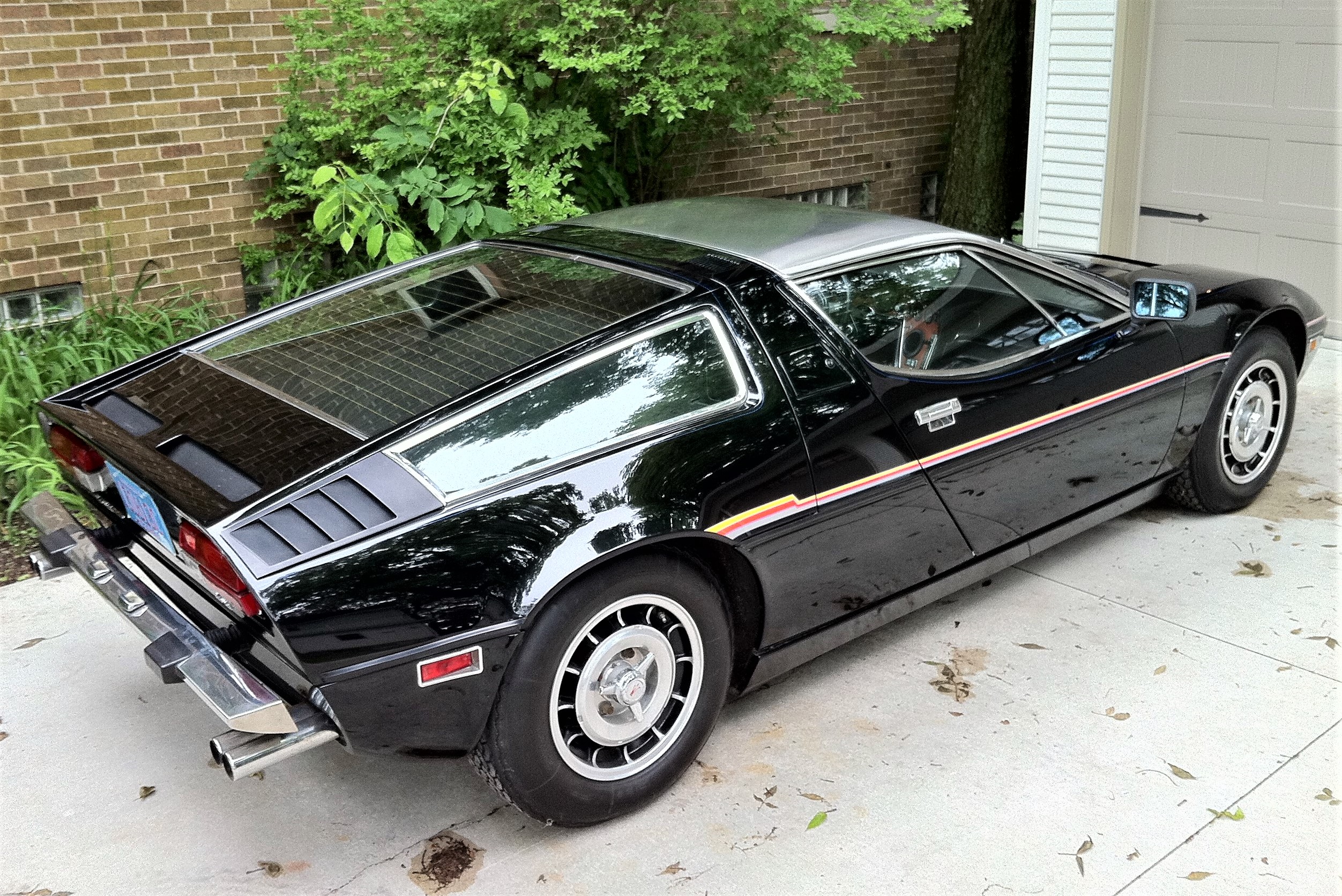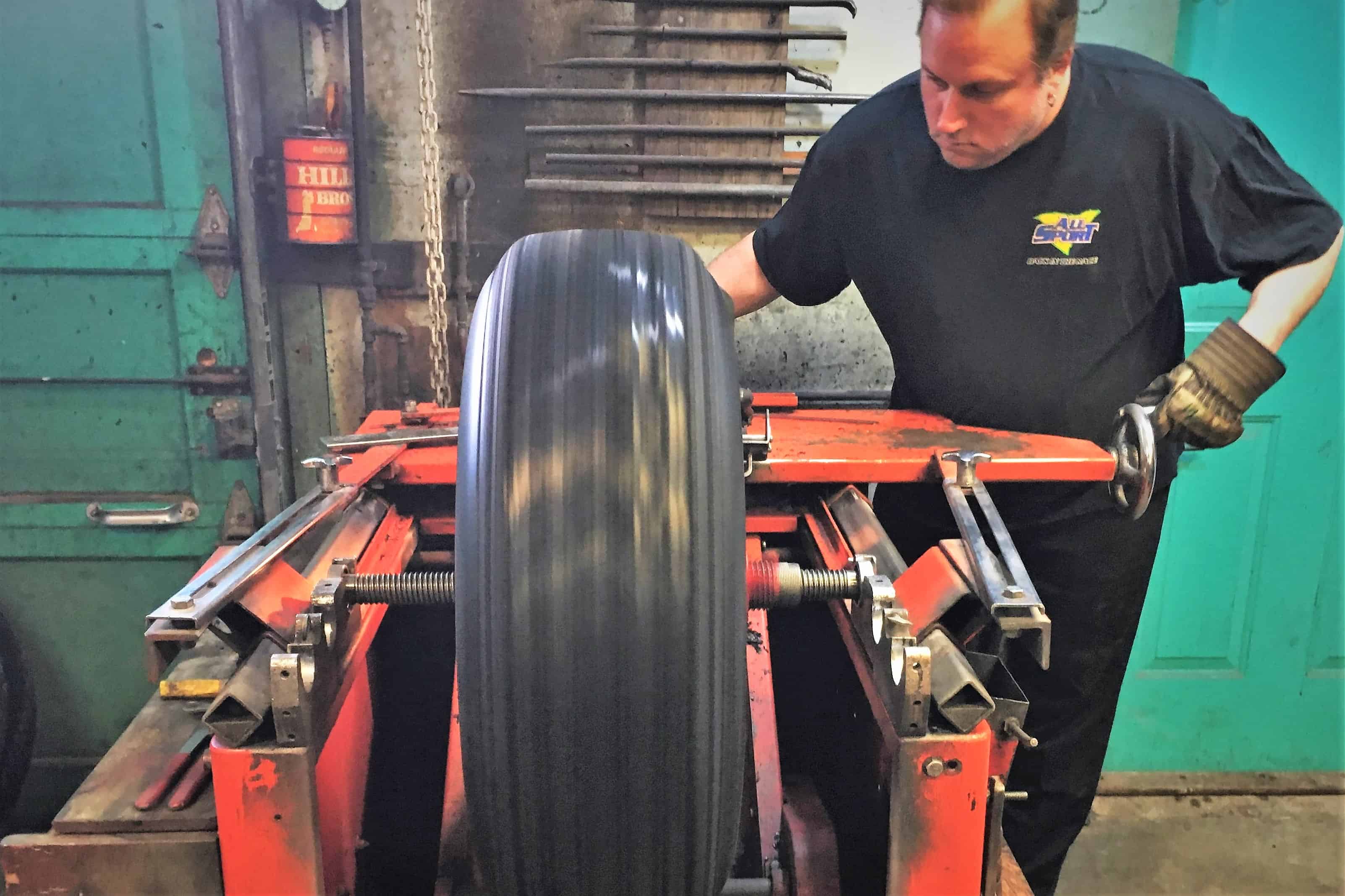Editor’s note: This article was originally published on April 24, 2018
Most tire shops these days attack your car as if they were auditioning for a NASCAR pit crew. “Time is money” in the automotive repair world. Mounting and balancing tires has become a “dirty” job often given to entry-level workers, guys who are eager to complete the task as quickly as possible and return to their smartphones.
We take for granted the scant contact patch which glues us and our metal cages to the tarmac at ever-dizzying speeds. While tire and wheel technology has greatly improved over the years, some of those gains are negated by indifferent installation; we just aren’t placing a value on the skills needed to do it with precision.

It wasn’t always this way. In the past, balancing a tire required tools and techniques that have gone away with reliance on computerized spin balancers. Nowadays, wobbly wheels are simply loaded up with lead weights to offset the imbalance. This relieves the symptoms, but it’s not the cure. Your tire can still be mounted way out of whack because no tire or rim is perfectly round.
With the road feel of older cars, these flaws get magnified. So, you’ll understand why I chose to go old school when mounting tires to my 1974 Maserati Bora, a supercar that (if singer Joe Walsh is to be believed) “does one-eighty-five.”

The Bora rides on Michelin XWX tires developed especially for the 1960s-70s era of high-speed European supercars, such as the Ferrari 365, DeTomaso Pantera and Lamborghini Miura. In period, they carried a maximum speed rating of 186 mph, giving some measure of comfort to guys like Joe Walsh.
For such collectable cars, having the correct type and profile of tire is critical to their operation and value. For these cars, Coker Tire in Tennessee offers reproduction Michelin XWX tires with a slightly more-sober speed rating of 168 mph. These are well-built, rugged and expensive tires – but like everything else in the world, they are not necessarily perfect.
Which brings us to the lost art of tire truing. Finding a shop that still has a tire lathe won’t be easy, let alone an operator with the skill to use it. Once employed everywhere in the industry, most truing machines are now gathering dust in back rooms. Serious racing shops and semi-truck tire-repair facilities are your best bet, as the efficiencies gained in truing are still valued there.
I’d read on a hot-rod message board about a shop an hour north of Chicago still practicing this arcane art. O’Brien Tire Sales in Mount Pleasant, Wisconsin, is a mom-and-pop tire store that’s been around since 1967. Sadly, founder Al O’Brien passed away at age 75 just a few months after celebrating the shop’s 50th anniversary, but son Mark O’Brien and employee Rich Clausen carry on the tradition of bespoke tire service. They systematically true every new tire they install.

Mark started working with his dad at 16 and moves deftly around the tidy shop. Upon breaking the heavy bead on the old tires, we run into evidence of the bane of tire guys everywhere: Fix-A-Flat. The gooey substance makes it difficult to mount and dismount tires without binding or leaking, so it must be cleaned off with a wire-wheel before proceeding.
After replacing the valve stems and checking the sidewall for any orientation instructions, liberal amounts of tire mounting lubricant are used and the new tire slips on easily. This is important because if the tire grabs and produces a cinched spot, Mark will have to break the bead to rotate and reseat the tire for best results.
We check the runout on the truing machine, and indeed one tire is found to have more lateral runout than can be corrected by shaving. Mark finds the high spot on the tire, pops the bead and rotates it 180 degrees, returning it to the machine and thus curing the problem. This step alone is something unlikely to occur in most tire shops today.

Now we are ready to shave the tire. The wheel is mounted in a jig specific to the Maserati’s bolt pattern and not the center hole of the rim, which is not true-center. Mark positions the lathe’s cutting wheel, which moves on an arbor in three planes against the tread as the machine spins the wheel with a roller.
The object is not to flatten the face of the tire, but to lightly shave off slight high spots within the existing curved profile. O’Brien checks his work with a profile gauge, but only years of hands-on experience can produce the desired results.
The material removed is between 1/64 – 1/128th of an inch thick, and the amount of shavings from one tire fills the palm of my hand. They’re as light as feathers. Still, looking over the cusp of the spinning tire, the slight wobble is now gone. Only now that we have acquired a truly round tire are we ready for the finishing touches on the computerized spin balancer.

Mark explained that the process is best utilized on new tires that have not had a heat cycle or been used on the road. “We could true used tires, but we’d have to spend so much time cleaning every little rock out of the tread so it doesn’t damage our cutting blade. We also need the tires to be at operating temperature so they are elastic and as round as they can be, not cold with a flat spot from sitting.”
Mark was impressed with the quality of the Michelin XWX reproductions from Coker Tire.
“Normally, you see more imperfections on brand-new tires. These were exceptional,” O’Brien said. “My dad Al used to say this about truing tires: ‘It’s meant to make good tires great, not bad tires good’.”
For my sports car, the inexpensive step of properly mounting and balancing my tires certainly took me from feeling good to feeling great. As far as doing “one-eighty-five” with my new tires…well my friends, I’ll never tell.






Shaving tyres V How deep are your pockets, Shaving tyres is not a lost art, Many Years ago, when tyre manufacture machinery was not as precise as today’s machines are, the rubber distribution in the casing was less accurate, I owned a tyre shop in the UK and it was always noticed by the fitters that, generally speaking the more expensive the brand then the less lead counter balancing was needed, Michelin’s for instance needed very little weights,!! Plus on certain brands rubber on the inside of the casing could be thicker, not by a lot addmitetly , but therefore NO amount of tyre shaving would resolve this problem,
Exceptionally sweet to see such a well kept Bora, particularly in a dignified color. On my return from being an advisor to The Kingdom, lo these many years ago, I seriously examined a vivid red Merak at a Baltimore dealer; alas, the insurance and maintenance $ were far more than those for the 911 I ended up buying.
How does one locate a dealer that can true tires, just phone work? Is there a dealer’s directory?
Thanks for the info and blast from the past Maser. -R
MOST shops today don’t even know how to "split the weights" and put them on BOTH sides of the rim. They just SLOP 5 or 6 oz in ONE PLACE.
I guess they never heard of "harmonic unbalance"
Last tire shop I knew of that ‘DID IT CORRECTLY’ was Norms tire in St. Paul, MN. Unfortunately I am 1800 miles away now.
Tire truing or shaving is a perfect way to insure a perfectly round tire assembly (no run out) smother ride / longer tire lift and improved fuel milage. I have been in the tire and auto repair equipment industry since the 60’s, owned & operated Amermac tire truing machines in my own shops. Helped a number of truck fleets save thousands of dollars on their tire & fuel bills by truing their tires. I have not seen one in years and would find it hard to find one today in my area.
Sir;
Many touring and cruising motorcyclists use car tires on the rear of their bikes. It’s called the darkside. The advantages and disadvantages of such are hotly debated. One of the issues is the flat contact patch. Do you think this technique could be used to put a radius on a car tire to more resemble a motorcycle tire? The area where the material is removed is the part of the tire that is least used on a cruiser or touring type bike.
Thanx,
Bob
Hi. Mark O’Brien at O’Brien Tires LLC. The whole point to this process is to make sure everything is as perfect as they can be. It is true that tires are being created better and better every year. But as Dad would say "They Don’t Fall From Heaven". So, nothing starts as perfect. Not even the wheels from your car will be perfectly round after a couple of decades of pot holes. What we are really doing is making sure there won’t be a problem. And over these many years, we have Zero customers returning with any tire issues other than an errant nail they may run over. Name me a company with that track record? If we just did the slap and go like other places, I’m sure that record would not hold.
As far as truing tires to reshape them is possible. But a lot of work because the machine is meant to take off only thousands of an inch, not 32nds. Not to say we haven’t done our fare share of racing tires 🙂
Thank You William Hall for this article and the info you shared. That is a beautiful car you have and try to stay under 185.
Mark O’Brien Tires
Racine, WI
There was a tire shop in Daleville, Al called OK tires. I had new tires put on my Z in 1972. I thought the guy was nuts when he started shaving the tire. I asked him about reducing the life of the tires, but he told me I’d get a better ride and the tires would last longer. After he mounted them on the car and was spin balancing them I was amazed that not one weight was added. He told me to drive it a few hundred miles and let him know if I had any problems . Never had a problem. I don’t know why it isn’t done all the time. I suppose it’s because they have a good profit margin on selling the weights. Trying also reduced wear on suspension.
Do youStill true tires